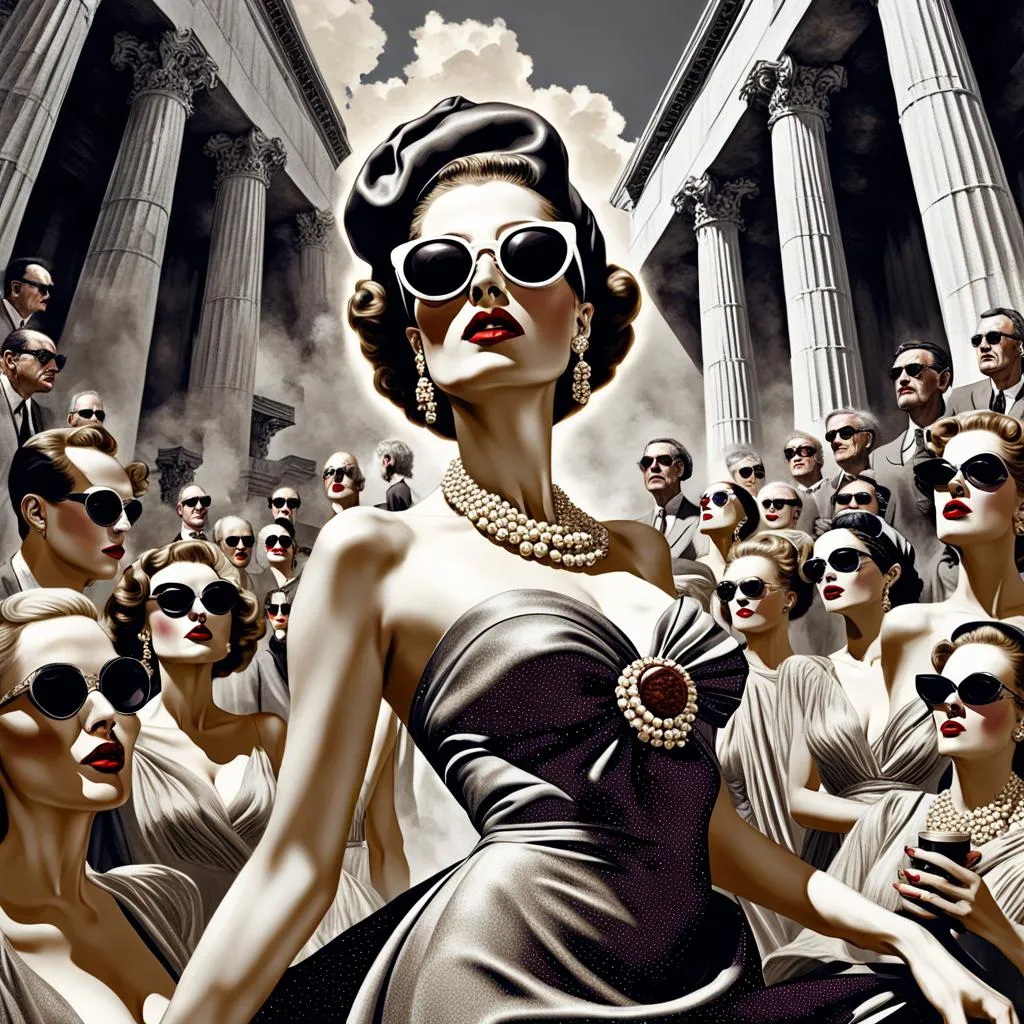#56 15.06.2023
Welcome to Performonks!
After the article on celebrities, some people asked me to write about influencers.
Challenge accepted.
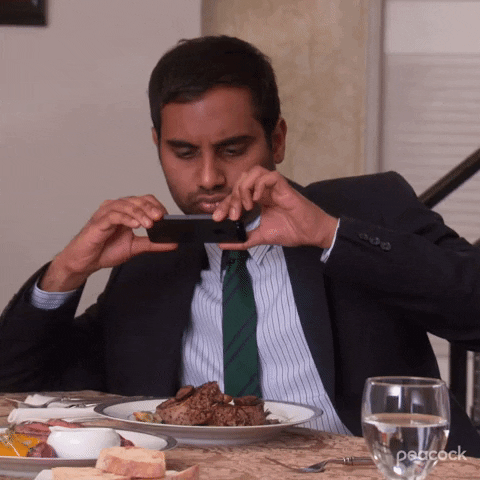
This is what we will cover-
- The art of influence is not new, but it has changed forever
- The influencer landscape is skewed with a looong tail
- My hypothesis on the psychology of influence – the five buckets of influence
- Research validates that bucket 1 influences sale and bucket 4 builds aspiration
- Putting it all together into a simple influencer framework (too simple?) with examples from boAt
The art of influence is not new, but it has changed forever
The art of influence probably began with the first exchange of ideas between our ancestors.
Today, 448Mn social media users, cheap data ($0.68 per GB vs. a worldwide average of $4.21), and the lockdown have changed the influencer landscape forever in four ways.
Few vs Many: The earliest influencers were few. Thought leaders like Socrates. Artists like Leonardo da Vinci. Books like The Gita. And personalities like Gandhi.
Today, there are 80Mn creators in India alone. This means there is one creator for every 5.6 social media users. A sobering statistic puts this in perspective – there are a total of 1.55Mn teachers in India – one teacher for 26.7 students. (Source)
Short vs long memory: The impact of Socrates et all has lasted centuries and decades.
Today, our memory of an influencer’s work is shorter than the life of a firefly. That’s why most influencers are creators – they have to create content constantly to stay relevant.
Attentive vs distracted: Goes without saying that consumers of the past had less content to consume, so influencers got the benefit of their complete attention and feedback. Not so today. Millions of consumers overfeed on content, yet are hungry for the new and different.
Few patrons vs many monetisation avenues: The earliest influencers were sponsored by patrons, so they were free to focus on their craft. Akbar and Vikramaditya’s Navratnas are legends in the field of music (Tansen), wit and wisdom (Birbal) and poetry (Kalidasa). Today’s influencers have many monetization avenues – support from Meta, Google, Tik Tok, brand endorsements or affiliate marketing.
Having said that, they struggle to stand out and make money in the cluttered landscape. Only 150,000 out of 80Mn are able to monetise. That too at average monthly earnings of only ~ $200.

Not just that, 77% of creators depend on brand deals for their revenue!

So influencers want to make money, consumers want new interesting content and brands want to reach consumers through influencers.
How can a marketer build a win-win-win influencer strategy in this scenario?
By starting where all marketing solutions begin – at the intersection of the landscape and human psychology.
First, the influencer landscape.
The influencer landscape is skewed with a looong tail of small influencers
Influencers move up the food chain as their followers increase.
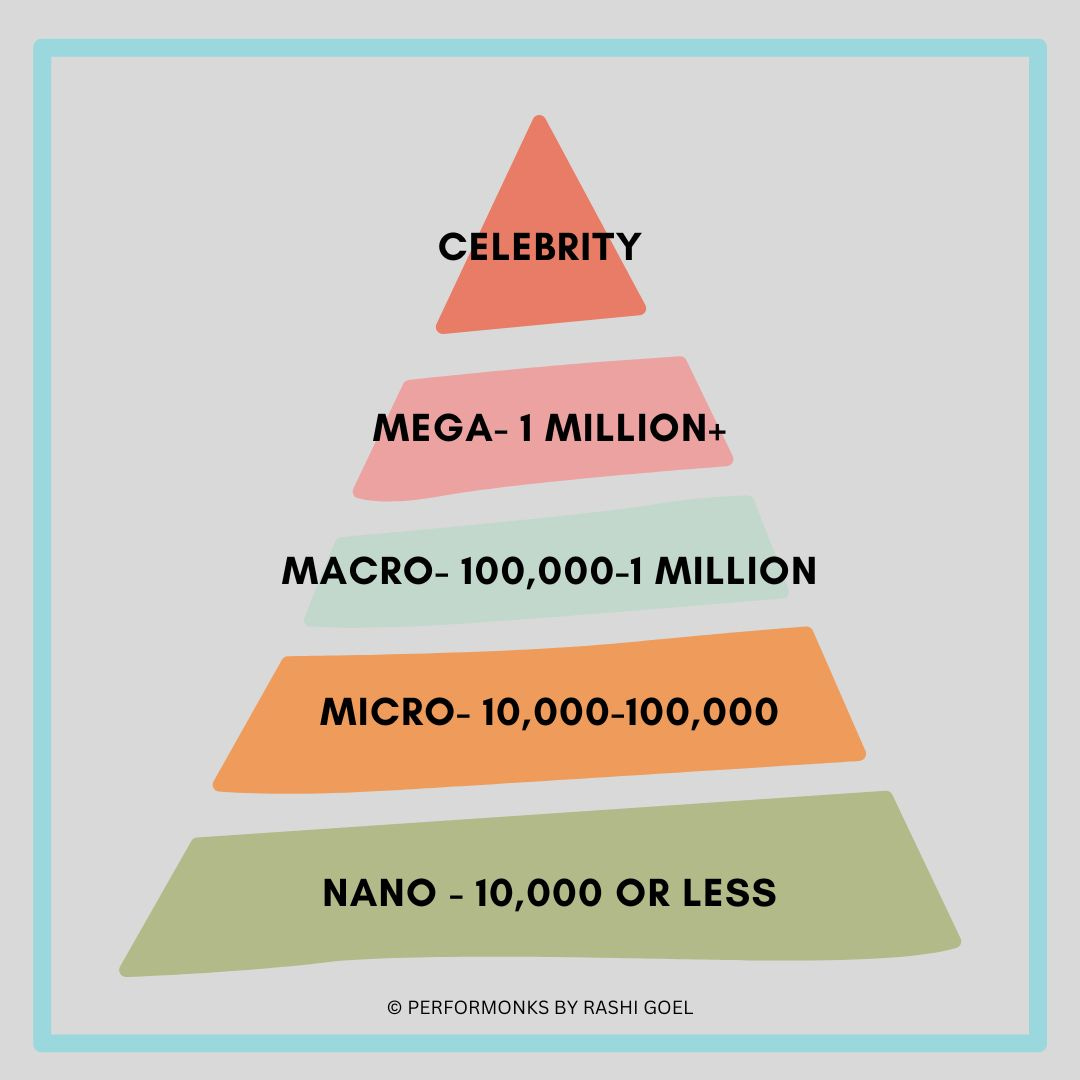
Celebrity influencers are at the top. They establish social media presence to connect with their fans after achieving fame and success as sportspersons, actors, musicians, writers etc. That’s why, India’s all-time top 10 Instagram influencers are all celebrities.

Nano, Micro, Macro, and Mega influencers are career creators hoping to become influencers. India’s top three creator-influencers are Bhuvan Bam (who started on youtube), Kusha Kapila and Diipa Khosla.
- Bhuvan Bam, the top influencer, has 17.1Mn followers on Instagram.
- Kusha Kapila has 3.3Mn
- Diipa Khosla has 1.9Mn
Notice the gap in followers between celebrities and mega creator-influencers?
There are only 1,200 YouTubers and only 10,000 Instagram creators with more than 1Mn followers.
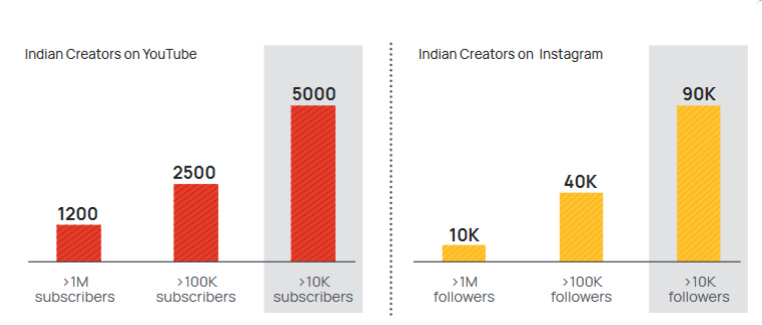
So the influencer landscape is concentrated – a few celebrities and mega influencers on one side and a long tail of niche influencer led communities on the other.
Let’s move to psychology.
My hypothesis on the psychology of influence
Broadly, we get influenced in five ways.
- Within-reach influence: Sometimes, we want to be influenced – for example, I consciously try to incorporate what Tim Ferris, Amit Varma and Shane Parrish tell me about life, reading, and productivity. I am also more inclined to buy the stuff they recommend because I want to emulate them.
- Compelling influence: Sometimes, we are compelled, and we have no choice- If you made Dalgona coffee or feta cheese pasta during lockdown (as did I), you know how powerful repeated suggestions can be.
- Unconscious influence: Sometimes, we don’t even realize we are being influenced. Behaviours of people we trust seep into us as water soaks into a sponge. If you are forty-plus and realize how much like your parents you have become, welcome to the Club of unconscious influence. In such cases we buy stuff, but we can’t pinpoint exactly who influenced us.
- Out-of-reach influence: Sometimes, we are happy to admire people from afar – we know what they represent is out of reach for us. But we don’t grudge them, because watching them gives us joy. For me, artists, standup comedians and entertainers are in this bucket. Just watching their talent releases my happy chemicals. Even though I have no desire to be like them, I would pay attention if they mentioned a product they like.
- So bad that it’s so good influence: Sometimes, we spend hours indulging in guilty pleasures – we follow people we don’t aspire to be – but we love to hate them! For me, Big Boss, Indian Matchmaking Show, Goop and The Kardashians fit into this bucket. We most likely may not buy products they recommend.
Now things start to get interesting because the same influencer might fall into different buckets for different people. If you are an artist, my bucket 4 might be your bucket 1. For someone else, my bucket 1 might be their bucket 5.
So which bucket of influence should marketers target? Buckets 1,2, and 4 seem within the control of a marketer. What does research say?
Research validates that bucket 1 influences sale and bucket 4 builds aspiration
Alexander P. Schouten, Loes Janssen & Maegan Verspaget conducted a study that compared the effectiveness of influencers vs celebrity endorsements across beauty, fitness, food, and fashion brands.
They concluded that influencers drive purchases better than celebrities because consumers feel more ‘similar’ to them (perceived similarity) and their ‘image’ feels more attainable (wishful identification).
It makes sense that we find product suggestions from people who seem more like us, more credible. For example, I will happily learn how to apply makeup from an influencer and also buy the same products she used. But I know that I can only admire a celebrity’s beauty from far. So even if she recommends a product, I may not buy it, because I know her kind of beauty is out of reach for me.

Greater the power distance higher the aspiration.
In summary, this is what we know thus far
- the influencer landscape is lopsided – a few mega and celebrity influencers, with a long tail of small influencers with niche communities.
- small influencers create within-reach desire and influence sale (bucket 1)
- when many many small influencers repeat the same message, they can compel us to buy something (bucket 2)
- celebrity influencers are more aspirational, so they can help build brand love (bucket 4)
- Bucket 5 is cringe, so only irreverent brands fit here. e.g. Tanmay Bhat’s takedown of Indian Matchmaking is so on-brand for him.
- Bucket 3 is ‘invisible’, and is an outcome of all marketing activities together.
At the intersection of all these points, lies our influencer framework, with examples from boAt.
Influencer framework

High reach/low engagement: when the influencer has millions of fans, low engagement and the absence of two-way conversations might mean high aspirational distance. Focus on creating desire by using their channel like broadcast TV. e.g. boAt does not advertise on TV or print, but has partnered with 14 celebrity+mega influencers. Its influencers are GenZ, entertainers and artists – their images rub off on boAt to position it as a distinctive and aspirational lifestyle and fashion brand. Traditional TV campaigns would have taken much longer to do this.

High reach/high engagement: this is the sweet spot. Combine endorsements that create desire along with sales ideas to convert desire into purchases. boAt has partnered with IPL teams since it’s launch. While constant visibility during IPL builds its brand, it also launches limited edition products to boost sale.
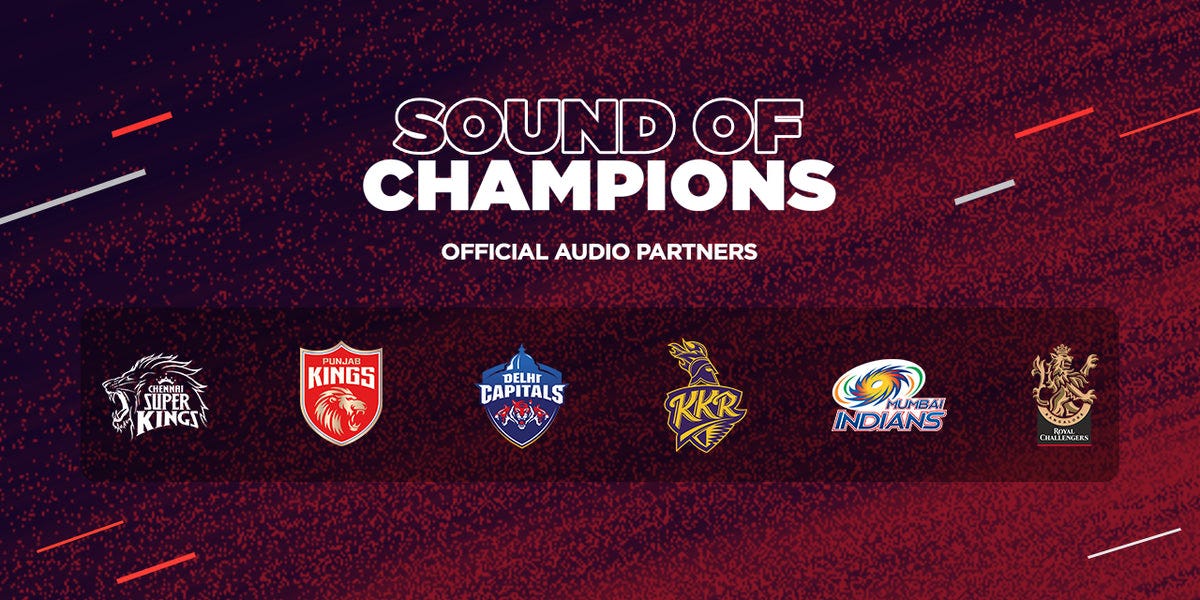

Low reach/high engagement: even though reach per influencer is low, high engagement proves high trust exists. The same message when repeated by many many influencers converts to sale. Nurture many such communities overtime with meaningful conversations and innovations. For example, boAt collaborated with celebrity designer Masaba Gupta to launch a limited-edition collection of headphones at the Lakmé Fashion Week. This underlined the fashion aspect of the brand and helped them strengthen their women user outreach.
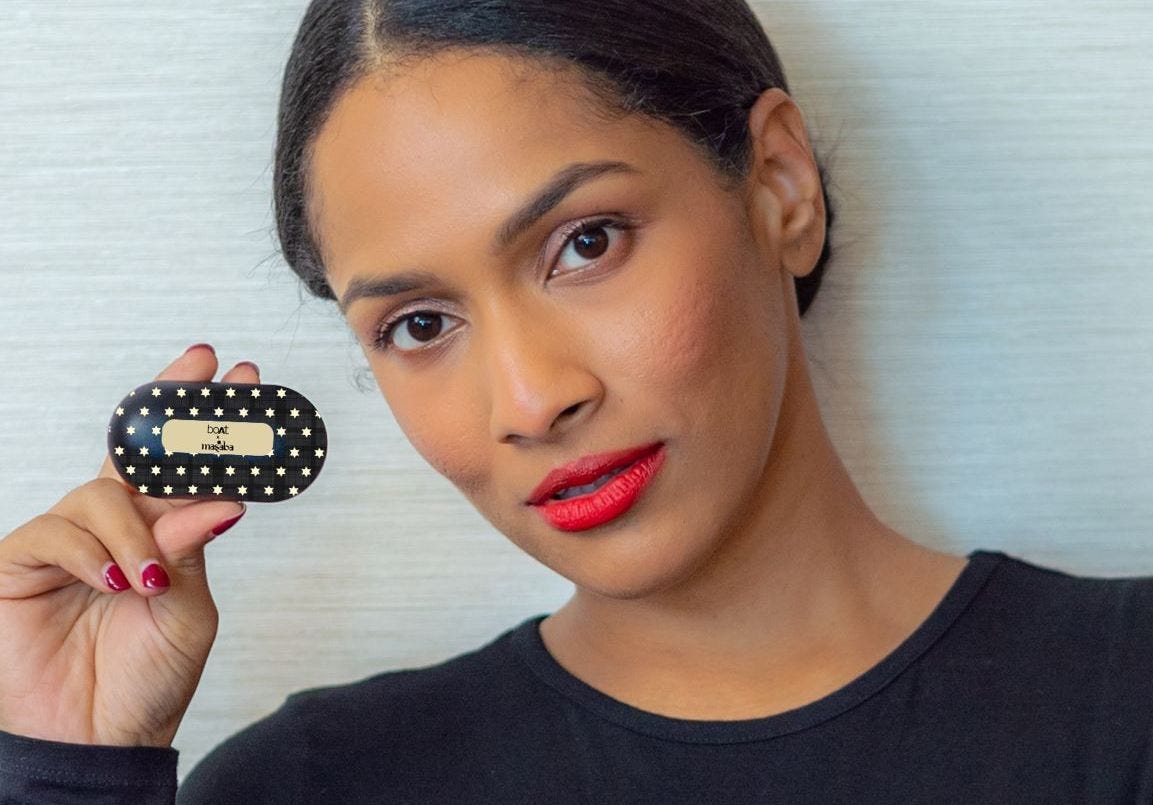
After writing all this, I realize that the framework is so simple and intuitive. And boAt shows us that it works IRL. It almost feels too simple… nevertheless, it was fun to work through ‘why it works’.
Having said that, all this influencing business is fine, but the nation needs more teachers.
Thanks for reading!
